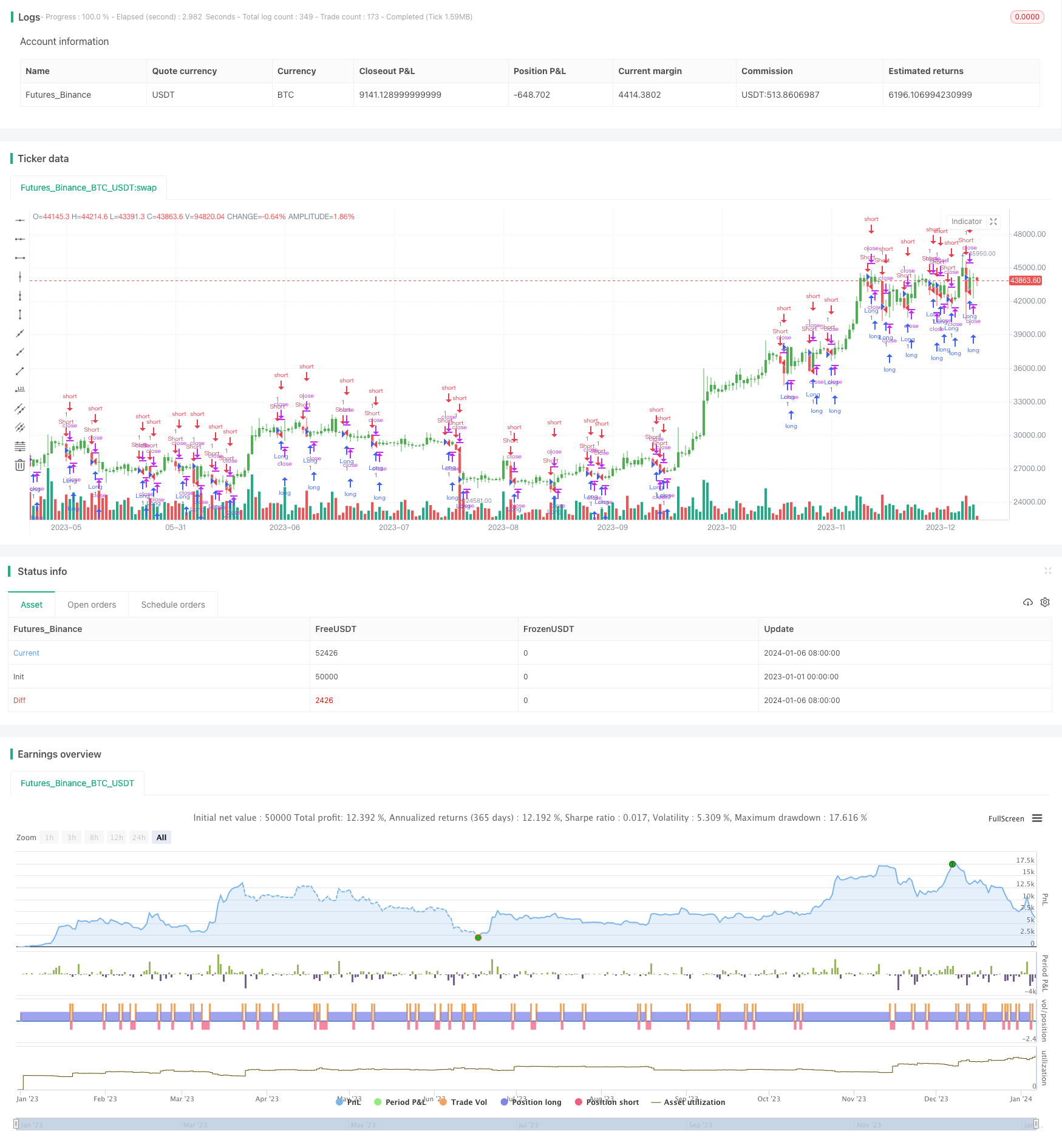
概述
该策略基于突破周期高低点来判断趋势方向,在价格突破周期高点时做多,突破周期低点时做空,属于趋势跟踪策略。
策略原理
该策略首先读取用户设置的周期(日线、周线等)和回看周期数。然后根据这些参数得到回看周期的最高价和最低价。例如设置为日线周期、回看1周期,则取上一日的最高价和最低价。
在实际交易中,如果收盘价大于等于回看周期的最低价,则判断为向上突破,做多;如果收盘价小于等于回看周期的最高价,则判断为向下突破,做空。
这样通过突破周期高低点来捕捉趋势方向,属于趋势跟踪策略的一种。
优势分析
该策略主要有以下几点优势:
基于突破点判断趋势方向,容易抓住强势盘整后的大趋势。
操作简单容易理解,非常适合新手学习使用。
可方便优化调整周期参数,适用于不同品种。
可通过反向输入设置逆向操作,丰富策略运用。
绘制周期高低点辅助判断,形成多重验证。
风险分析
该策略也存在一些风险:
无法有效过滤震荡盘整,可能出现多次误操作。
无法控制止损,存在一定程度上的亏损风险。
对交易费用敏感,实际盈亏存在一定偏差。
无法限制仓位规模,存在超量问题。
针对上述风险,可设置止损机制、优化过滤条件、控制仓位数量等方法进行优化。
优化方向
该策略主要可从以下几个方向进行优化:
增加过滤机制,避免震荡盘整频繁开仓。可设置价格通道、波动率等过滤条件。
设置移动止损或时间止损。控制单笔损失风险,确保整体profitability。
优化仓位规模和资金管理,防止超量问题,确保策略稳定性。
测试不同周期参数的效果,选择最优参数组合。
增加算法交易模块,利用机器学习算法提高决策效率。
总结
总的来说,该突破高低点回测策略基于趋势跟踪判断方向,简单易操作,适合新手学习,但存在被套利困难的风险。通过增加过滤条件、止损机制、控制仓位等优化手段,可以减轻这些风险,使策略效果更好。该策略可为我们进一步研究和改进提供思路和借鉴作用。
/*backtest
start: 2023-01-01 00:00:00
end: 2024-01-07 00:00:00
period: 1d
basePeriod: 1h
exchanges: [{"eid":"Futures_Binance","currency":"BTC_USDT"}]
*/
//@version=2
////////////////////////////////////////////////////////////
// Copyright by HPotter v1.0 03/07/2018
// This script shows a high and low period value.
// Width - width of lines
// SelectPeriod - Day or Week or Month and etc.
// LookBack - Shift levels 0 - current period, 1 - previous and etc.
//
// You can change long to short in the Input Settings
// WARNING:
// - For purpose educate only
// - This script to change bars colors.
////////////////////////////////////////////////////////////
strategy(title="High and Low Levels Backtest", shorttitle="HL Levels", overlay = true)
SelectPeriod = input("D", defval="D")
LookBack = input(1, minval=0)
reverse = input(false, title="Trade reverse")
xHigh = request.security(syminfo.tickerid, SelectPeriod, high[LookBack])
xLow = request.security(syminfo.tickerid, SelectPeriod, low[LookBack])
vS1 = xHigh
vR1 = xLow
pos = iff(close > vR1, 1,
iff(close < vS1, -1, nz(pos[1], 0)))
possig = iff(reverse and pos == 1, -1,
iff(reverse and pos == -1, 1, pos))
if (possig == 1)
strategy.entry("Long", strategy.long)
if (possig == -1)
strategy.entry("Short", strategy.short)
barcolor(possig == -1 ? red: possig == 1 ? green : blue )